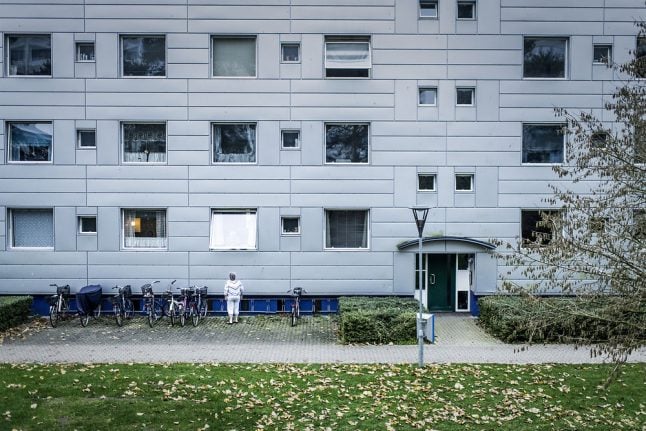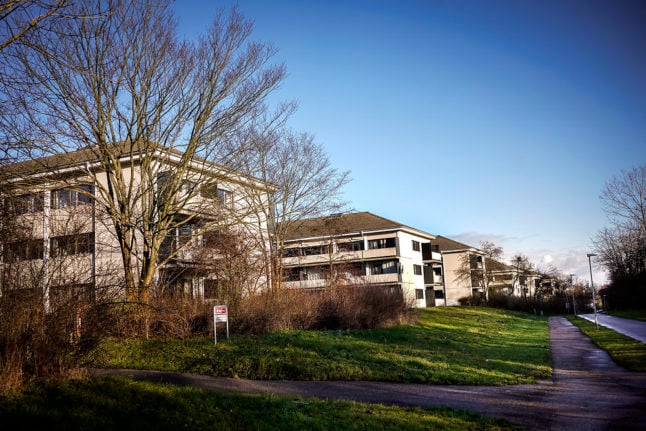The 28 areas listed on the so-called ghetto list is one fewer than the total cited by the ministry last year.
Three areas were no longer deemed to fit the criteria deemed by the ministry to fulfil the definition of a ‘ghetto’.
The neighbourhoods in question are Gadelandet/Husumgård in Copenhagen, Charlotteager in Høje Taastrup and Ellekonebakken in Viborg.
Gadelandet/Husumgård was removed due to increased average income; Charlotteager due to a fall in criminal convictions amongst residents and Ellekonebakken because the proportion of ‘non-Western’ immigrants and their descendants has fallen.
In order to be included on the list, housing areas must have over 1,000 inhabitants and fulfil three out of five criteria:
- Over 40 percent of adults aged 18-64 not engaged in employment or education (average over two-year period)
- Over 50 percent of residents have non-Western nationality or heritage
- Over 2.70 percent of residents aged 18 or over convicted for criminal, weapons or narcotics crimes (average over two-year period)
- More than 50 percent of residents with basic school education or lower (includes undeclared education)
- Average pre-tax income for adults aged 18-64, not including unemployed, less than 55 percent of pre-tax income for administrative region.
People considered not of Danish heritage are categorized into two groups: ‘immigrants' and ‘descendants' of immigrants (‘efterkommere' in Danish).
A person is considered to have Danish heritage if she or he has at least one parent who is a Danish citizen and was born in Denmark. People defined as ‘immigrants' and ‘descendants' do not fulfil those criteria. The difference between the two is that an ‘immigrant' was born outside of Denmark, while a ‘descendant' was born in Denmark.
The list has been criticized in the past for stigmatising areas, thereby making it more difficult for them to improve socioeconomic conditions.
Although three areas were removed from the latest version of the list, two were added or put back on it.
In Korskærparken, Fredericia, the number of ‘non-Western’ immigrants increased, while Karlmoseparken in Køge saw a higher number of convictions.
The list is significant because it can determine which neighbourhoods are encompassed by the 2018 ‘ghetto plan’ law, which has the stated aim of reducing societal exclusion in neighbourhoods defined as ‘ghettos’.
Those measures include mandatory demolition of housing fitting certain criteria and compulsory daycare attendance for small children, as well as harsher punishments for specified crimes.
READ ALSO:
- Danish 'ghetto plan' revised to prevent unnecessary demolitions
- Denmark's 'ghetto plan' unlikely to solve problems faced by underprivileged areas: residents
- Outrage in Denmark after EU-funded Turkish report brands it 'Islamophobic'
Commenting on the updated list, housing minister Kaare Dybvad highlighted a general increase in employment levels.
“The general picture in almost all areas is that there is a very positive trend in employment compared to the rest of the country,” Dybvad told Ritzau.
The minister also reiterated his dislike of the use of the word ‘ghetto’.
“It’s what the law calls it, so I have to act in accordance with that.
“But I think it’s an imprecise term for the areas we have in Denmark,” he said.
The ‘ghetto list’ was first introduced in 2010 under then-Prime Minister Lars Løkke Rasmussen’s centre-right government, while a later coalition headed by Rasmussen introduced the ‘ghetto plan’ legislation in 2018.



 Please whitelist us to continue reading.
Please whitelist us to continue reading.
Member comments